Menu

As the self storage market continues to grow, climate-controlled self storage is becoming increasingly popular as clients look for facilities with units that can store and preserve their valuable and sentimental items by controlling temperature and humidity. Climate-controlled self storage can benefit self storage owners in numerous ways – mainly by bringing in more income while differentiating the facility from its competitors. There are several considerations for building and/or converting climate-controlled storage units that we’ll look at in this blog.
The budget for climate-controlled self storage units should include all the costs associated with building and opening a facility. This includes materials, labor, permits and licenses, taxes, insurance, and equipment installation such as HVAC systems, flooring, elevators, and lighting fixtures. In addition to these hard costs, there are also soft costs that need to be taken into consideration such as design fees and marketing expenses.
Once you have factored in all the various cost elements associated with a climate-controlled self storage unit construction project, you can add up all the individual line items to get a total estimated cost for your project.
Before building or converting to climate-controlled storage, here are some things you should consider 1.
Design. Both single- and multi-story building designs are equally suitable for climate control. While a one-story facility only has one air conditioning output level to consider, in a two-story site, you may require greater A/C output on the second level since it will gain heat from the roof. This is why it is key to work with a knowledgeable contractor (such as Forge Building Company) who understands A/C loads.
Demand. Before investing in climate-controlled self storage, it is best to complete a market feasibility study of your location. This will enable you to analyze the competition, consumer/business mix, and income levels.
Areas with higher income levels usually mean that clients are more likely to spend additional money on a climate-controlled storage unit. Locations in business areas will attract a strong storage demand for items such as records, furniture, fixtures, and inventory. At the same time, locations close to highly traveled roads are also valuable to salespeople who may need to store items such as cosmetics and pharmaceuticals, vending supplies, and semi-perishables. Finally, long-term tenants may store their belongings across multiple seasons. These individuals understand that the temperatures can vary widely and go to extremes.
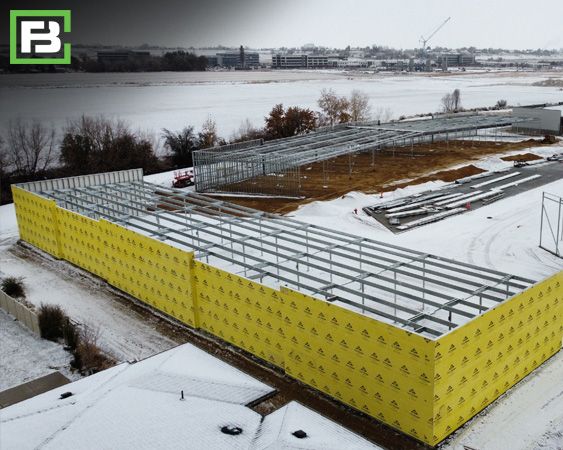 Cost. There are different factors that affect the cost to build a climate-controlled self storage facility including the size, number of storage units, and complexity of your project. When costing out a climate-controlled build, you will need to factor in the cost of the HVAC mechanical system and extra insulation your facility will require. A study by Storelocal Storage Coop suggests that you can expect to pay about $60-70 per square foot to build a non-climate controlled self storage facility (multi-story self storage units typically cost $70-95 per square foot. When costing out a climate controlled self storage unit build, a good rule of thumb is to add 15% to each square foot or to the total cost.
Cost. There are different factors that affect the cost to build a climate-controlled self storage facility including the size, number of storage units, and complexity of your project. When costing out a climate-controlled build, you will need to factor in the cost of the HVAC mechanical system and extra insulation your facility will require. A study by Storelocal Storage Coop suggests that you can expect to pay about $60-70 per square foot to build a non-climate controlled self storage facility (multi-story self storage units typically cost $70-95 per square foot. When costing out a climate controlled self storage unit build, a good rule of thumb is to add 15% to each square foot or to the total cost.
The cost for either type of facility can vary based on other factors as well – the cost of steel and your location. Costs tend to be higher in a major metropolitan area than in a small community. It is also key to remember that monthly utility costs will be greater for climate-controlled storage units. However, these costs will go down as capacity increases.
In a study by Statista Research Department, renting a climate-controlled self-storage unit in the U.S. was on average $10 more expensive than a non-climate-controlled unit in 2024. In April, the average rent for a climate-controlled unit was $149. Renting the smallest unit costs on average $53 2.
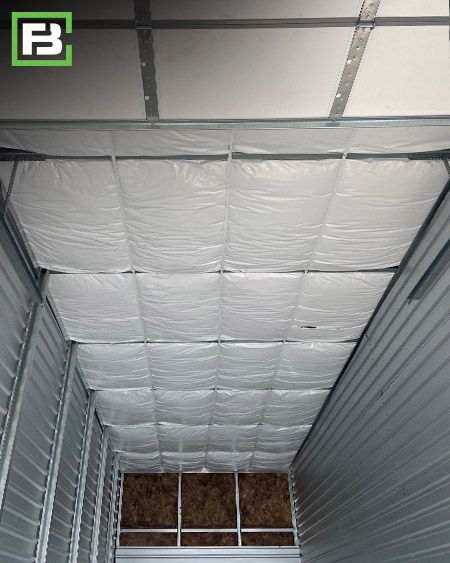 Insulation. The majority of self storage exterior walls contain long rows of metal doors. These doors are not air-tight, which can be a challenge with heating or cooling. That is why it is key to work with a self storage builder (such as Forge Building Company) that will design your climate control units with fully insulated interior walls and roofing.
Insulation. The majority of self storage exterior walls contain long rows of metal doors. These doors are not air-tight, which can be a challenge with heating or cooling. That is why it is key to work with a self storage builder (such as Forge Building Company) that will design your climate control units with fully insulated interior walls and roofing.
Typically, R 19 fiberglass is recommended for walls and R 38 for the roof. The facility’s heat loss and gain must be determined by the HVAC contractor who will calculate insulation values, ceiling heights, cubic area, type of construction, amount of lighting, exterior doors, number of windows, and the air infiltration from outside. It is key to work with a contractor that also understands commercial insulation requirements imposed by the International Energy Conservation Council (IECC) which are designed to preserve energy.
Temperature. Climate control units typically maintain a temperature below 85 degrees in the summer and above 55 degrees in the winter, with humidity below 65% to stop mold or mildew.
 HVAC Systems. When it comes to selecting your HVAC system, it is key that you and your contractor research the costs and efficiencies of various heating and cooling units to determine which one is best for your facility. You will also want to identify HVAC systems that have a separate humidistat for reducing humidity.
HVAC Systems. When it comes to selecting your HVAC system, it is key that you and your contractor research the costs and efficiencies of various heating and cooling units to determine which one is best for your facility. You will also want to identify HVAC systems that have a separate humidistat for reducing humidity.
For other design considerations, see our blog: Is Climate-Controlled Self Storage Worth the Investment?
There are a number of benefits to building climate-controlled self storage. These include:
Climate-controlled self storage continues to be sought after by both clients and developers. While the cost to build is more expensive, they can be a great asset for self storage owners providing additional revenue and a competitive advantage to attract new tenants.
The best way to get started with this type of build is to partner with a highly-qualified self storage builder, like Forge Building Company, so you can rest assured that your facility will be built according to all applicable regulations. Partnering with the Forge team will get you the right preparation and execution so that your climate-controlled self storage facility can be constructed and open for business in no time.
For samples of climate-controlled self storage facilities the Forge team has built, see:
References
1. Storelocal.com. (2023, January 27). Retrieved from storelocal.com: https://members.storelocal.com/blog/considerations-for-a-climate-controlled-storage-facility
2. Statista. (2024, June 7). Retrieved from statista.com: https://www.statista.com/statistics/1051121/monthly-rent-climate-control-self-storage-unit-sizes-usa/
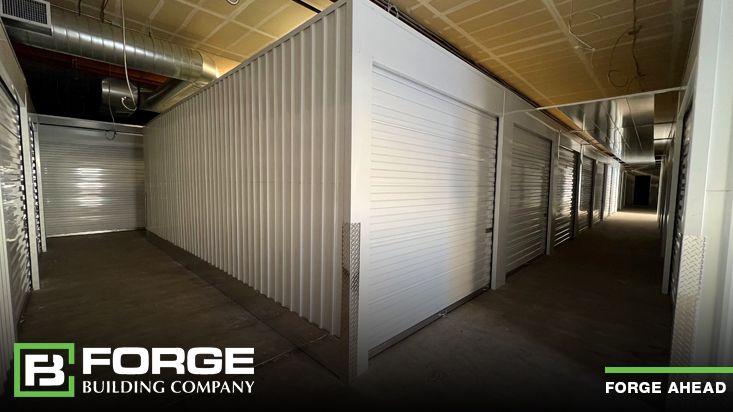
With the recent pandemic and decline in big-box retail, there is now a significant inventory of vacant buildings out there for sale. The current trend of office vacancy rates increasing, building owners are seeking creative ways to make that empty space generate profit again. As such, some are converting these structures into self-storage facilities or selling them to others who wish to do so.
While this development path can be an efficient time and cost-saver, there are important considerations. This blog will help you decide if conversion of an existing building is the right path for you to be able to properly transform a structure into a well-built self storage facility.
Like any building project, there are definitely pros and cons to consider for conversions of existing buildings into a self storage facility. Here’s our take.
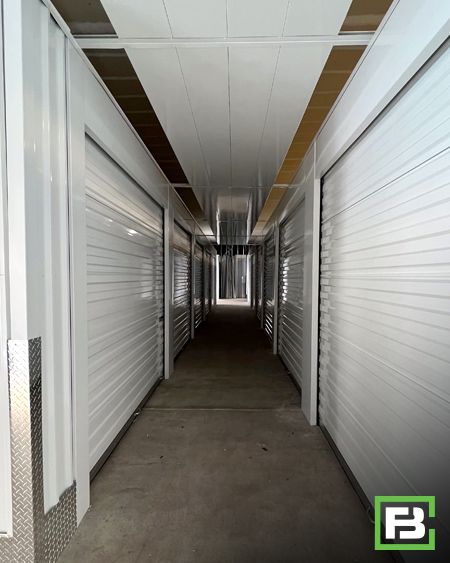 Pros. Because of the amount of inventory out there, you may be able to purchase an existing building for less than it would cost to build it, so after completing the renovation, you’ll have a lower cost basis for your project. Another advantage is that if you maintain the footprint, access points, and site circulation, you may also be able to avoid going through the site-plan approval process with the city, which can save money and simplify entitlements. These advantages add up to an expedited construction schedule at a lower cost.
Pros. Because of the amount of inventory out there, you may be able to purchase an existing building for less than it would cost to build it, so after completing the renovation, you’ll have a lower cost basis for your project. Another advantage is that if you maintain the footprint, access points, and site circulation, you may also be able to avoid going through the site-plan approval process with the city, which can save money and simplify entitlements. These advantages add up to an expedited construction schedule at a lower cost.
Cons. On the flip side, since the structure wasn’t originally built with self storage in mind, it may not always be located in an optimal location for visibility. In addition, the design needs to adapt the building can cause irregular unit sizes and long travel distances from loading areas to units. One other consideration is zoning. This can be a problem since many vacant buildings in commercial zones don’t allow for self storage. Finally, it is important to assess the acquisition price and building condition against all the costs of the conversion and anticipated profits down the road to determine if conversion is the right business strategy.
Along with the pros and cons mentioned above, following are some other considerations.
For any self storage building project, whether it’s a conversion or one being built from the ground up, your site selection is the number one consideration. Retail-like visibility is always preferable to being out of sight. No amount of online marketing can replace the free exposure of being located along a frequently driven, high-traffic route. Proximity to potential clients is key.
One of the most restrictive challenges in pursuing a conversion project is finding a building where self storage is permitted. Thankfully, many jurisdictions appreciate creative solutions to filling empty structures. A zoning authority that has a positive view of storage as a community-serving use will aid your cause; however, if storage is still considered an industrial use that should remain on the periphery of communities, your development path is going to be all uphill, costing excessive time and money.1
As in any type of self storage build, it is critical to understand rates, occupancies, and the competitors around you. The team at Forge always recommends that a complete and thorough market study be completed. It is also key to investigate whether or not self storage is allowed in the zone where the building is located. If it is, then you may need a conditional-use permit or rezoning permit.
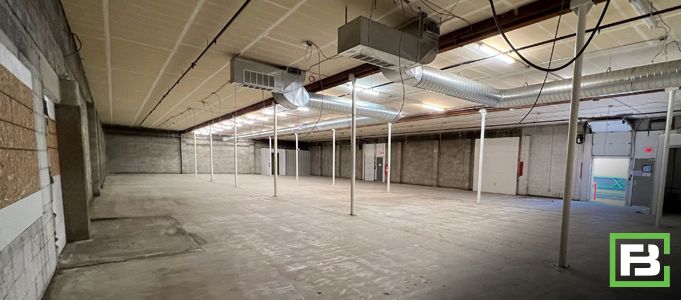
Old Idaho Statesmen Building Before Conversion to Self Storage
Forge also always recommends that you check the title and survey to determine if there are covenants, conditions, and restrictions, easements, and other agreements that could impact your ability to convert the building. It’s common, especially with retail properties, to have private restrictions that prohibit self storage, easements that impact circulation, common-area maintenance fees, shared utilities, etc. Environmental problems are also common, especially in older manufacturing and warehouse facilities. Thoroughly understanding your site and its history is a key part of having a successful project.
When looking at starting a conversion project, typically a commercial zone 2 (C-2) location is the most desirable in a market area. It will typically have a large and destination-bound traffic count and great visibility. In addition, facilities in C-2 typically rent up faster than those in light industrial 1 (I-1).2
It is also good to eliminate any potential site that cannot accommodate a minimum of 50,000 net rentable feet. This is typically optimal for cost-efficient management.
Once you have your site selected, you will need to assess the structure itself – the roof, structure, parking lot, mechanical, etc. In addition, many old buildings have refrigeration systems and other items that are costly to remove. Asbestos, and other hazardous materials remediation may also need to be addressed.
Floor load. If the building you are looking to convert is a multi-story building or has a mezzanine, it is key to ensure the floor load is adequate for self storage use.3 One of the most significant costs in the conversion of office space to self storage will be the assessment and likely remediation of the structural system. Most office buildings have been designed and constructed with a much lower live load than what’s required for self storage, often rated for 50 to 80 pounds load per square foot (PSF) compared to 125. That’s about a 50 percent deficit.
To help you calculate the loading design, it is key to do field measurements with limited destructive testing and a structural engineer. (See our blog titled, “Designing a Self Storage Facility – How to Select Your Design Team”)
If the structural engineer finds that the structure doesn’t meet the required loading for self storage, there are still solutions. Adding light-gauge bearing walls is the most cost-effective, while reinforcing existing beams could also be sufficient. Reinforcing under-bar joists is the costliest solution.
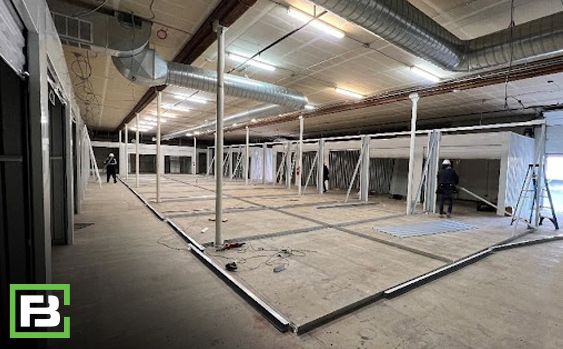
Old Idaho Statesmen Building During Conversion to Self Storage
Rentable Space. Most urban and suburban self storage facilities are 100,000 to 120,000 gross square feet. However, taking into account elevators, stairs, and corridors may reduce the rentable yield to 75,000 to 90,000 square feet. It’s key to know what amount of rentable square footage is necessary to be profitable.
Another consideration you will need to make in this same area of the design, is the average unit size and mix.
In a standard conversion, you’ll use the existing building without changing the overall footprint. This is the easiest, most straightforward type of project. Depending on the building, it is also common to add one or more floors in the existing footprint.
Increasing the rentable square footage of the building through a footprint expansion or the addition of more structures can be another great option. This may include adding drive-up units or vehicle storage in the rear or side of the building.
At the end of the day, the design of your conversion will play a significant role in its success.
Thermal envelope. Energy-code compliance has only been around since 2012. Therefore, the level of renovation necessary will depend on the existing wall, slab, and roof.
Elevators. Check to see if the existing elevators are in your tenant loading/unloading area. A self storage elevator should have a 4,500-pound capacity with a taller cab to accommodate large pieces of furniture.
Loading area. An appropriately sized loading and unloading area with ample space to maneuver large vehicles, such as moving trucks, is key. Your loading area should have a minimal vertical clearance of 14 feet. It should also be convenient to the building interior, particularly the elevator.
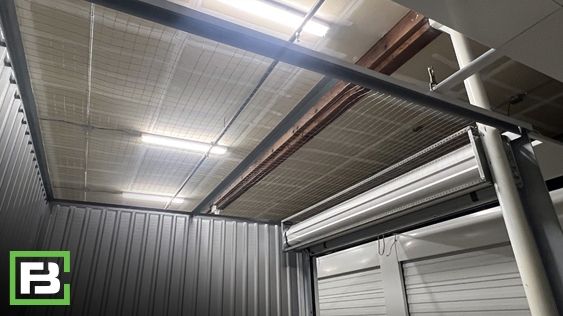
Old Idaho Statesmen Building After Conversion to Self Storage
Self storage has some of the easiest mechanical systems of any real estate type. In the case of an office conversion, the goal is to minimize replacement. The preferred self storage HVAC system is a residential-sized split system with minimal to no ductwork. Boilers and other perimeter unit systems lack efficiency.
A sprinkler system will likely be a code requirement for self storage structures of 100,000 square feet or more. If your building has such a system already, the upgrades should be minimal. The large open areas with no ceilings allow for an optimized sprinkler-head layout.
The last item to evaluate is the electrical system. Typically, the system already in place is likely to be sufficient to meet your self storage needs, but plan to replace the lighting to more energy-efficient LEDs with motion sensors.
The exterior look of the building is key, especially to potential client driving by. That’s why it is key that your building stands out. Fresh paint, clear, visible signage and nice landscaping increase the curb appeal.
The building-conversion process always comes with extra surprises. Therefore, it’s important to carefully select a professional design and construction team with self storage experience such as Forge Building Company (see our blog titled, “Designing a Self Storage Facility – How to Select Your Design Team”).
Self storage conversions are a great alternative to ground-up development. Evaluating the site, assessing the building, designing the project, and understanding the costs will provide you the information you need to make a wise decision. Finding one that meets the criteria for self storage with limited need for remediation can be a tricky, so working with the team at Forge Building Company can make the process much easier. The budget savings of building a self story facility from a conversion can be 25% to 50%. Give the team at Forge a call today, we would love to help you convert an existing building.
Works Cited
1. Brown, R. (2023, March 22). Inside Self Storage. Retrieved from Insideselfstorage.com: https://www.insideselfstorage.com/conversions/converting-old-office-buildings-outstanding-self-storage-facilities
2. Pollack, L. (2012, July 20). Inside Self Storage. Retrieved from Insideselfstorage.com: https://www.insideselfstorage.com/conversions/retrofitting-building-your-dream-self-storage-facility-guide-intrepid-souls
3. Wyckoff, S. (2021, January 21). Inside Self Storage. Retrieved from Insideselfstorage.com: https://www.insideselfstorage.com/conversions/self-storage-conversion-projects-pros-and-cons-building-assessment-design-pitfalls-and
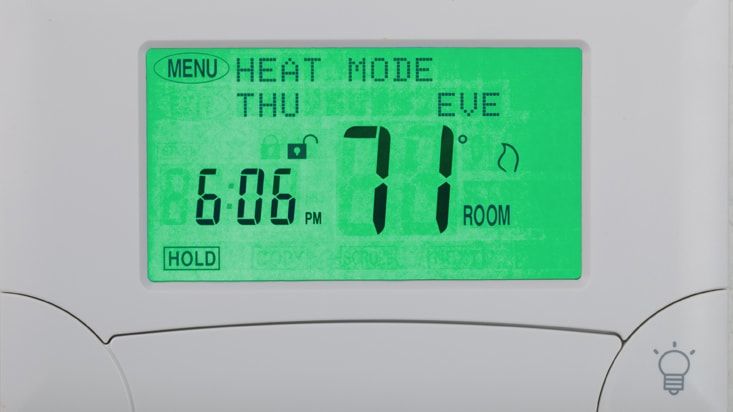
Very few places in the country are fortunate enough to avoid the frigid temperatures of winter, the extreme heat of summer and the humidity that comes with it. For that reason, climate-controlled storage spaces have exploded in popularity, and this is particularly true in areas prone to extreme temperatures or high humidity. Renters storing valuable or irreplaceable items often prefer climate-controlled self storage units due to the high degree of protection and peace of mind they provide.
In 2021, owners of self storage facilities saw extremely high occupancy rates. The average cost of renting a storage unit also surpassed pre-pandemic levels. Self storage business owners saw a shift in terms of the types of storage spaces renters desire, and many are updating their buildings or adding new ones to accommodate them. This is where climate-controlled units come into play.
The need for additional storage space is growing especially rapidly in lower-cost cities as population and migration growth continue to flourish in more affordable areas. In 2020, self storage occupancy rates held steady at around 92%, and self storage market insiders expect this trend to continue well into this year and beyond.1
Owning a climate-controlled storage business is a great investment. Storage business profit margin is up to 11% per year, where the capital-intensive business profit ranges between 3%- 5%.2
Climate-controlled units are also a great way to increase profit because they typically command higher rental rates than traditional space of the same size. The amount of upcharge will vary by region of the country; however, in some markets, this could be 15-35% or more.3 Another huge advantage is that the newest generation of 100% climate-controlled, multi-story buildings enables a developer to build roughly three times the rentable square footage on the same amount of dirt. This means the owner can absorb a much higher land cost. It also allows them to consider many more parcels for a project.4
Building a climate-controlled self storage facility is different from building the traditional ones. There are definitely more unique intricacies. Following are some design considerations.
When it comes to the design of your temperature- or climate-controlled self storage buildings, here are some common items to consider.
Costs. It’s common for commercial steel building developers to phase a project, but when planning a site with climate control, consider how the design will impact construction costs. The most cost-effective building is a large, wide structure.
On average, the cost of building a climate-control self storage is $35-$70 per square foot. It may also cost around $8-10 million for a 2.5 acre landed storage. This figure represents almost all costs, including land, land development, construction, permits, insurance, materials, labor, etc. The actual cost may vary depending upon your location, materials used, type of building, etc. This is simply a rough estimate based on 2021 factors.
A study by Storelocal Storage Coop suggests that when costing out a climate-control build, you also need to factor in the cost of the HVAC mechanical system and the extra insulation you’ll need. This could add, on average, 15% to each square foot or to the total cost when compared to building a non-climate controlled self storage facility.
Heating and Cooling. Depending upon the location of your facility, a facility owner must decide if they are going to offer both heating and cooling (or one or the other). Generally, a climate-controlled facility should maintain building and unit temperatures below 85 degrees in the summer and above 55 degrees in winter, with humidity below 65 percent to prevent mold and mildew.5
Moisture is the biggest design consideration. Split-system HVAC units work well in these situations. When used in conjunction with a dehumidifier, these systems ensure that stored belongings stay dry. Another consideration is to utilize ionizers in lieu of additional “outside air intakes” to help minimize moisture.
Unit access. Climate-controlled buildings are usually built with interior unit access via hallways, but more commercial steel building developers are building climate-controlled units with exterior, drive-up access. Since these units are open to the weather elements, climate-control can be a bit more challenging. Therefore, these units should be equipped with insulated sectional doors (typically R-19 insulating value) rather than traditional roll-up doors. The proper HVAC system can also help overcome these challenges.
Unit size. Interior-access buildings won’t contain units as large as those used for drive-up storage. The largest unit size in these buildings is typically 10-by-20.
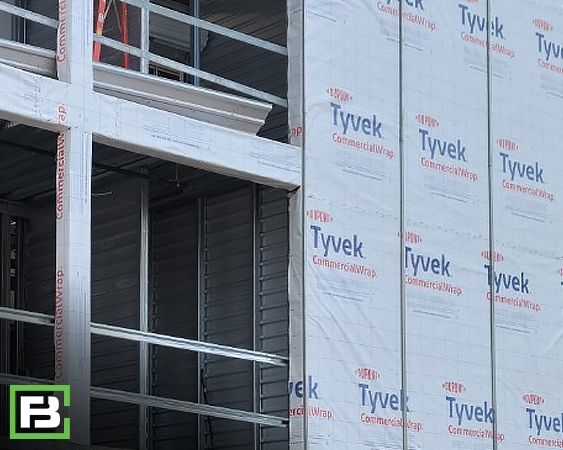 Insulation. How much insulation you need and what kind will vary based on local building codes, weather conditions, and owner preferences. The International
Energy Conservation Council recently changed its guidelines in many areas, requiring more insulation to better preserve energy. This isn’t a bad thing because it can provide facility owners the most cost-effective way to keep temperature and humidity at optimal levels.
Insulation. How much insulation you need and what kind will vary based on local building codes, weather conditions, and owner preferences. The International
Energy Conservation Council recently changed its guidelines in many areas, requiring more insulation to better preserve energy. This isn’t a bad thing because it can provide facility owners the most cost-effective way to keep temperature and humidity at optimal levels.
Inside Self Storage recommends a minimum of 6 inches of fiberglass (R19) for roofs and walls. The building’s heat loss and gain must be determined by the HVAC contractor. This contractor will calculate insulation values, ceiling heights, cubic area, type of construction, amount of lighting, exterior doors, number of windows, and the air infiltration from outside.
Projects can be built with spray-in foam, fiberglass batts, insulated panels or some sort of combination. While building a project with a higher R-value will cost more, it pays benefits in two ways – your operating costs will be lower contributing to a higher property value when it’s time to sell.
Other ways to insulate your facility include:
Roof pitch. You can choose from a variety of roof pitches for climate-controlled buildings. Roofs can be designed to allow room for the desired insulation thickness (R-value) directly under the panels. Or, on higher-pitched buildings, the insulation may be placed directly over the ceiling of the heated/cooled space as you would find in a home, with insulation on the attic floor rather than under the rooftop.
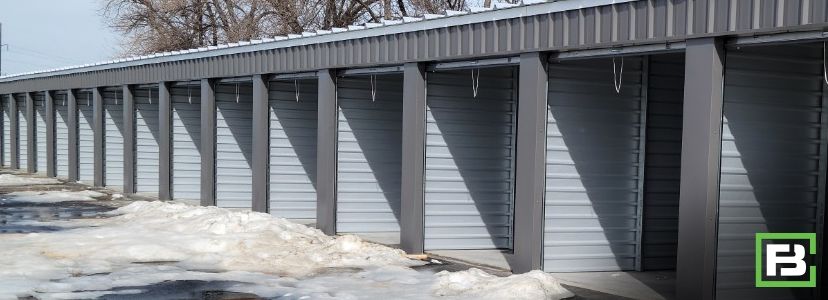
As the self storage industry continues to grow, the large majority of new builds are including climate-control in the mix. And in many markets, self storage sites consist entirely of climate-controlled units.
Climate-controlled units can be an excellent addition to your storage investments since these units command higher rental rates, bring in new clients and generate additional revenue.
Whether you want to add Climate-Controlled Self Storage units to your existing facility or plan to include climate-control in a new build, the team at Forge Building Company will help you design the most cost-effective solution.
Works Cited
1. Regency Steel Buildings. (n.d.). Retrieved from Ministorageoutlet.com: https://ministorageoutlet.com/self-storage-industry-projections/
2. Rider, J. A. (2022, February 20). howmuches.com. Retrieved from How Muches: https://howmuches.com/how-much-does-it-cost-to-build-a-climate-controlled-storage/
3. Statistica. (n.d.). Retrieved from Statistica.com: https://www.statista.com/statistics/1051121/monthly-rent-climate-control-self-storage-unit-sizes-usa/
4. Rowley, A. (2022, April 14). Inside Self Storage. Retrieved from Insideselfstorage.com: https://www.insideselfstorage.com/building-componentsmaterials/building-climate-controlled-self-storage-benefits-and-design
5. Storelocal Storage Coop. (2022, February 23). Retrieved from selfstorage.coop: https://www.selfstorage.coop/blog/considerations-for-a-climate-controlled-storage-facility

You have your storage facility up and running, or you’re in the planning phase of building your next facility... so what are the key factors you need to think about when it comes to your doors, roof, and climate control?
In our February 25th blog “Ensuring Form, Function and Long Life: How to Properly Care for Your Self Storage Unit Doors and Roof” we discuss how to properly care for your doors and roof. And in our November 21, 2021 blog post titled "Generate More Revenue by Offering Climate Controlled Self Storage” we discuss common uses and benefits along with design considerations when building a temperature or climate controlled self storage facility.
What it boils down to is that these three critical components are critical to keeping your facility and your tenant’s belongings safe, secure, and protected from any sort of criminal activity and/or weather elements. Using the right materials is also super important for curb appeal and energy efficiency.
One of the most distinguishing factors of a self storage facility are its steel roll up doors, so it’s important that they be well-maintained! Not only do they contribute to curb appeal, but they are a large part of the tenant experience providing safety for their belongings and can be a safety hazard if left untended. When building a new facility, metal wall and siding panel systems will provide the most flexibility when it comes to design, and these can be used for new construction or retrofit to existing buildings.
In addition, roll-up doors will also help maximize usable square footage in each storage unit.
Steel roll up doors should be inspected before a tenant moves in, and again after they’ve moved out. Inspection of a roll-up door doesn’t just mean ensuring it looks good, but also means it is functioning properly.
Here’s a closer look at metal panel wall systems.
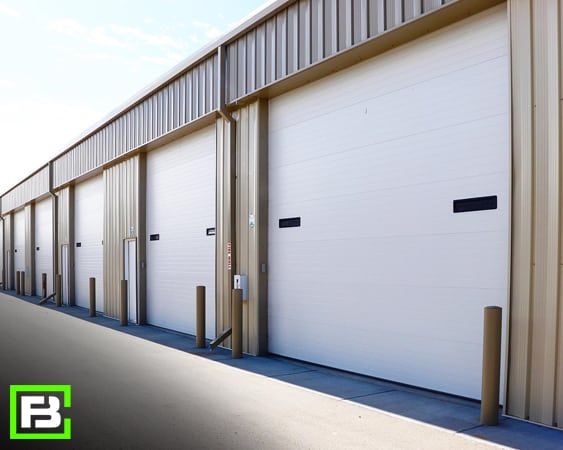
Metal Panel Wall Systems
There are a number of benefits to using metal panel wall systems for a self storage facility. First, they often come in a variety of colors that can coordinate with any buildings' décor to create continuity and increase the facility’s curb appeal. Metal panel wall systems are also durable, environmentally friendly, and cost-efficient.
In addition to the aesthetic appeal and safety ratings of metal wall panels, they are also revered for their sustainability in the building industry. Not only can they help with reducing the consumption of energy within the building, but they can also be recycled. Recyclable metals can then be restructured into other metal wall panels with the same structural integrity.1
The good news is that Forge has one of the largest selections of metal wall and siding panel systems in the self storage industry. The Company’s wall panels include single skin, insulated, exposed fastener, concealed fastener, and interior wall liners, and most can be installed both vertically and horizontally, providing additional flexibility in design. Forge’s metal siding panels can be used for new construction or to retrofit existing buildings.
In addition to providing complete building packages, Forge also offers components to be installed in buildings by our experienced team. The system can include either swing or steel roll up doors as well as man doors. Additional steel angle, wire mesh, and burglar bars are available as needed. Hallway walls can be purchased as flush or ribbed PBU panel.
 When looking at key factors for your existing or new facility, one of the biggest considerations is the roof. Protecting your tenant’s belongings is the main focus of a self storage facility. It doesn’t matter if you have a traditional, single-story facility or a multistory facility – your roof matters. Even a small leak can damage your client's property.
When looking at key factors for your existing or new facility, one of the biggest considerations is the roof. Protecting your tenant’s belongings is the main focus of a self storage facility. It doesn’t matter if you have a traditional, single-story facility or a multistory facility – your roof matters. Even a small leak can damage your client's property.
As self storage buildings age, roof maintenance and repair become more important and time-consuming. An inspection and maintenance program are an important part of sustaining roof life as well as keeping costly repairs and property claims in check. That’s one of the reasons the team at Forge Building Company recommends commercial metal roofs.
With proper inspection and maintenance, a metal roof can last for decades. The goals of a good inspection and maintenance program are to proactively locate and repair possible leaks while extending the life of the metal panels. This inspection and care will help you keep your roof in the best possible condition. The most effective examination for metal-roof systems includes four specific areas: the perimeter, the ridge, fasteners, and debris.
To learn more, see Metal Building Re-Roofing with Standing Seam Metal Roof Panels.
A metal roof will also act as a fire barrier if some part of the building or the surrounding area were to catch fire. Another benefit is that metal roofs can prevent water build-up from creating mold or decay problems that could destroy the building's structural integrity.
Very few places in the country are fortunate enough to avoid the frigid temperatures of winter every year or the extreme heat of summer. These extreme temperatures are not good for storing items unless you put them into a self storage unit that is climate controlled.
If your self storage facility is located in a part of the country that reaches temperatures above 90 degrees, air conditioning is definitely needed to protect client’s property from problems like rotting or yellowing. Self storage units located in areas that fall below 32 degrees may need to be heated to prevent cracking or warping.2 And places with both extremes will need humidity protection. Fluctuating temperatures can create condensation inside electronics, causing irreparable damage. Likewise, anything that has liquid in it already can crack due to expansion from freezing. This is especially true of battery cells, including those for cars, mowers, and other small engines, which can crack when frozen.
A temperature-controlled self-storage facility is one that’s both heated and cooled. Its purpose is to provide an environment suitable for preserving stored goods, so the temperature range will typically be higher or lower than what you would find in a home or office—usually heated to 55 degrees and cooled to 85.
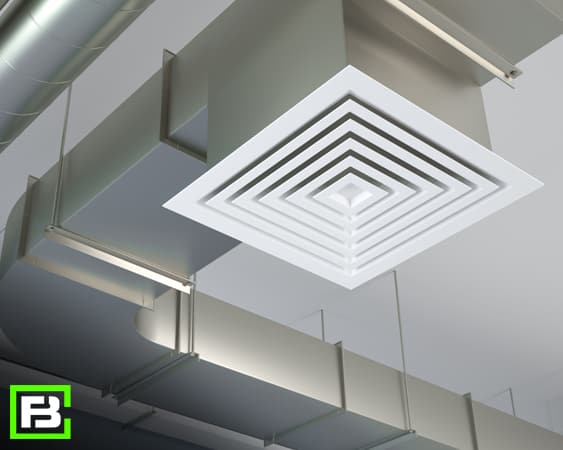
Today more self storage sites are starting to include climate control in the mix, and in some markets, many storage sites consist entirely of climate-controlled units. In most markets, climate or temperature-controlled units can be an excellent addition to your storage development. Through the use of insulation and central heating and air, a climate-controlled unit will protect your client’s belongings in the harshest of winters and/or the hottest summers.
And with today’s more efficient building insulation, it’s more important than ever to work with a reputable storage unit contractor such as Forge Building Company to install a system that not only heats and cools, but also monitors and removes humidity.
Works Cited
1 Metal Sales. (n.d.). Retrieved from MetalSales.us.com: https://www.metalsales.us.com/metal-wall-panels/
2 StorageFront. (n.d.). Retrieved from storagefront.com: https://www.storagefront.com/storagetips/company-tips/climate-control/